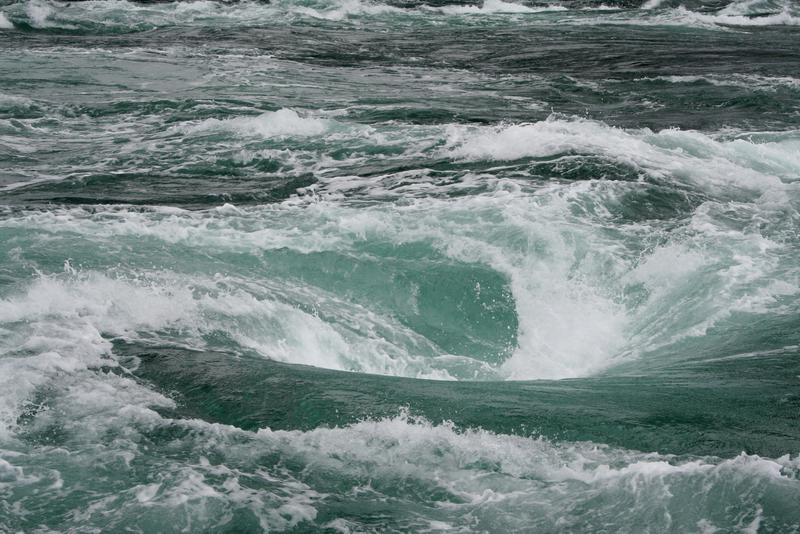Lake Peigneur And The Diamond Crystal Salt Mine Disaster
By | August 10, 2019

About a two-and-a-half-hour drive west of New Orleans sits a placid lake that for all its unassuming looks was the scene of one of the most bizarre disasters in history.

Lake Peigneur was a shallow, freshwater lake favored by fisherman that averaged about 10 feet depth spread out over 1,300 acres. The lake featured an island with a popular botanical garden. The small town of Delcambre sat south of it by a canal of the same name which flowed into the Gulf of Mexico. It was home to a small flotilla of shrimping and fishing vessels.

Other industries were active in the Lake Peigneur region, too. Fossil fuel exploration was ongoing, and oil companies had been probing the lake bed. Meanwhile, there was an old and immense salt mine that extended under the lake. The mine which had been in operation since 1919 had been taken over by the Diamond Crystal Salt Company.
November 20, 1980, proved to be a day which permanently altered this Louisiana landscape. An exploratory oil rig operated by the Wilson Brothers Corporation and under the supervision of Texaco was drilling deep under the lake. At about 4:30 a.m., the drill seized up at roughly 1,300 feet. The rig workers toiled to get it loose. There were several popping sounds.
A little later, the rig began to tilt. The workers immediately evacuated. Something terrible was happening as they watched the 150-foot tall rig disappear into a ten-foot deep lake. Little did they realize that their 14-inch drill had created a disaster of biblical proportions.

Essentially, the drilling company used the wrong kind of map and placed their drill in the wrong position. The drill, instead of encountering oil or natural gas, pierced the roof of the salt dome that covered the third level of the Diamond Crystal Salt mine.
While the hole was small at first, it grew very quickly since the freshwater that ran into the mine dissolved the salt almost instantaneously. The mine began collapsing, widening the hole and forming a great whirlpool whose first victim was the oil rig.
Meanwhile, in the mine, up to 55 workers saw lights blink coupled with strange sounds in the tunnels. Tremors started shaking the blacktop on the surface. The mine was evacuated immediately. After some harrowing moments on a very slow elevator which brought workers up from well up to 1,800 feet underground, all made it to safety -- albeit the last to get out were soaking wet.

The level of Lake Peigneur dropped immediately as all its freshwater filled the mine. It was incredible to watch. An eyewitness likened it to “a giant bathtub” whose drain had been unplugged. The maelstrom sucked down eleven barges, several mobile homes, a tug boat, and large pieces of land which included 150-foot trees. A new home and a greenhouse full of exotic plants were added to wash it down with pieces of the popular botanical garden.
As all this water ran into the mine, it compressed the air in it. When the pressure became too great it burst forth in a 400-foot geyser coupled with deafening rushes of air.
It is no wonder that one witness at the time said that it was “the end of the world.”

Eventually, the power of the whirlpool was so great that it reversed the flow of the Delcambre Canal which always flowed into the Gulf of Mexico -- completely unprecedented. The current reached 35 miles per hour and in the process, a temporary 130-150 foot waterfall was formed -- the tallest ever in Louisiana state history.
It took two days for the lake to refill this with brackish seawater. As this happened, nine of the barges that had been sucked down into the maw popped back up to the surface. When filled, Lake Peigneur was 200 feet deep, the deepest in the state. The entire ecosystem was permanently changed from freshwater to salt.

In twenty days, people were allowed to return to their homes as no further seismic activity seemed evident. As for the salt mine, it was a total loss. Diamond Crystal sued Texaco and the Wilson Brothers Corporation -- reaching a $32 million settlement. Of the 300 miners on the payroll, only 90 were able to maintain their livelihood. Mineworkers sued for lost wages but lost the case although they did receive a lesser amount in compensation for mental anguish. Texaco also paid out another $12.8 million in property damage suits.
The miracle of the Lake Peigneur incident was that not one person was injured or killed in one of the strangest man-made disasters in history.

